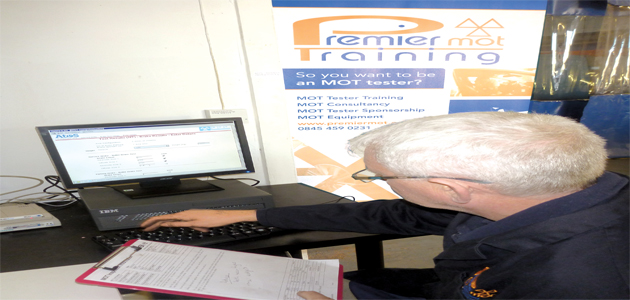
Computerisation has been accepted within the MOT scheme for some time now with the statistics collated regularly assessed by VOSA. Site managers and nominated testers now monitor their performance reports, which compare themselves to other nationwide testers within the scheme.
At Premier MOT we have a growing concern that when testers are comparing their average test times to the scheme average, they’re far too concerned with potential shortfalls in their test time comparisons. Even though some testers are carrying out a thorough test, they may end up being logged on for a shorter period of time than they expected (compared to the scheme average). As a result, they then ‘sit it out’ to achieve the time believed acceptable by VOSA.
The average test time is approximately 45 minutes throughout the scheme, but testers shouldn’t be led to believe that this is the time expected to carry out a sufficient MOT test. If VOSA were asked how long an MOT test should take, the answer would be: “It takes as long as it takes”.

There is no recommended time for testing any vehicle. If it takes 30 minutes, fine, if it takes 90 minutes, again that is fine. Don’t be tempted, having carried out a full test correctly in 30 minutes, to ‘sit it out’ for an extra 15 minutes to make the time up to the scheme average. This is distorting the averages and not correctly representing the time logged on.
The prime reasons we’ve discovered that can lead to short testing times are:
- An over-exuberant acceptance check
- Is the car testable?
- Is it as described?
- Is it the correct class?
- Will the car be damaged (or you) if you continue?
That’s all, no more. Don’t continue to start testing any items after this conclusion. It takes minutes, so go and log on now and not in 10 minutes after you’ve checked the interior etc – no matter how tempting this may be. Remember, VOSA monitor the test time from the point you logged on to the point you logged off as this is deemed to be the time that the vehicle is being tested!
Another favourite we come across is servicing the vehicle before it is tested. This is frowned upon by VOSA because it may not reflect the actual condition of the vehicle upon presentation and can distort the failure percentage. How much of the service covers MOT testable items? Quite a lot. So after a service, is a tester really going to do a full test, repeating checks already done during the service? Again, falsely logging on to compensate for unrealistic times.
Failure to use an assistant is also indicative of short test times (non ATL or OPTL). These actions are deemed very serious by VOSA and can incur the maximum of 500 points to both the NT and the AE. I quote:
‘Fraud, Dishonesty or Gross Negligence
Computerised System, dishonesty or gross negligence – for instance; the issue of a VT20 or VT30 to vehicles that have attended the VTS and entered and left the test bay in a time that would not allow a full examination to be carried out.’
Remember if you’re a busy VTS and start the next test whilst logged on to the previous one because you think you need to make the time up, VOSA might just appear and ask you why you’re testing a vehicle that isn’t logged or why the vehicle that you’re logged onto at that time has been sitting in the car park for the last 20 minutes.
In summary, undertake the test as expected and record it as it happens. Be realistic, be accurate, and be honest, then watch that scheme average time start to plummet as the rest of the scheme also begins recording accurate and honest test times. Work to a timescale that allows you to perform a complete test that you’re happy with. The performance ‘report’ is exactly that – a report and not a guideline.
Happy testing!









